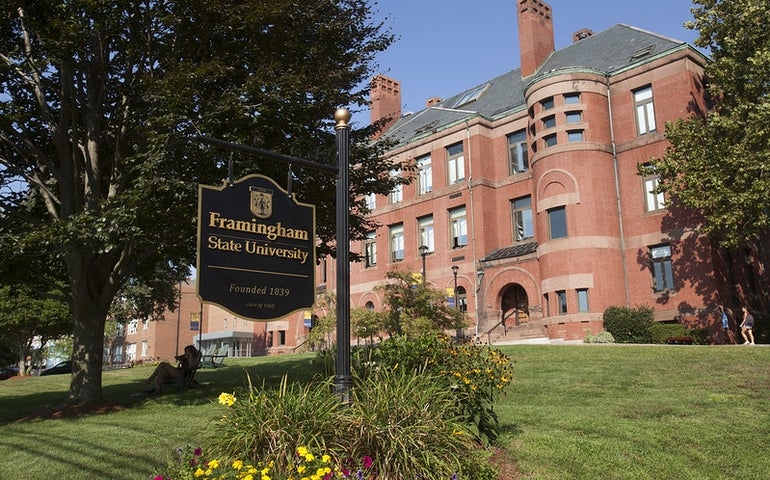The share of Massachusetts students who take out loans to pay for public higher education has exploded in the past two decades while the combined pressure of inflation and a lack of investment have hamstrung the impact of state-funded financial aid, according to a new report.
With lawmakers facing decisions on how to deploy $1 billion in newly available tax revenue, the Hildreth Institute is set to publish an analysis calling for action to provide a “significant and reliable annual source of funding for student financial aid” and to reform what the group called a complex, cumbersome system.
The report, which was obtained by the News Service, found that Massachusetts stands in sharp contrast to national trends.
From 2001 to 2021, the inflation-adjusted national average for state-provided financial aid per full-time equivalent student increased 15 percent, researchers found. Over the same span, the inflation-adjusted amount of state aid per FTE Massachusetts student dropped 47 percent, the institute found.
“State financial aid per student has steadily declined in the last two decades, eroding the purchasing power of state grants and scholarships,” Bahar Akman Imboden, the report’s author and managing director of the institute, wrote. “The total state aid students receive covers only a fraction (12 percent) of the cost to attend college.”
Citing research from the National Association of State Student Grant & Aid Programs, the report said Massachusetts ranks 37th in the nation in the amount of state-funded financial aid provided per undergraduate student.
MassGrant, the state’s primary tool for providing need-based financial aid to students, covered about 80 percent of tuition and fees at public universities in 1988, according to Imboden. Today, it covers only 8 percent of tuition and fees for UMass students and 11 percent for state university students, the report said.
“For Massachusetts to truly reach its key educational priorities, the student financial aid system needs to see continued, significant investment that addresses growing financial unmet need and helps simplify the path for students so that getting a credential or degree from the state’s public higher education system is more accessible and attainable,” Imboden wrote.
A bit more than half of the state’s nearly 154,000 undergraduate students attending public colleges and universities received state financial aid in 2021, according to the report.
The latest report from the institute, a research and policy organization “dedicated to restoring the promise of higher education as an engine of upward mobility for all,” adds to an analysis it published in the spring that found the costs of public colleges and universities in Massachusetts increased 59 percent in the past two decades, one of the fastest clips in the country.
Massachusetts lawmakers in recent years have targeted public K-12 education for an injection of funding through a multi-year law often referred to as the Student Opportunity Act. Higher education advocates have set their sights on securing similarly substantial reforms for colleges and universities here, and so have advocates for early education and child care programs.
The implementation of a new surtax on household income above $1 million will create a sizable new pot of money for transportation and education purposes, with top Democrats and the Healey administration agreeing this week on a rough estimate of $1 billion in revenue in fiscal year 2024.
The expected arrival of those dollars is already kicking up heated debate about the best way to divide them up.
Imboden did not make direct reference to the surtax in her report, though she recommended policymakers identify a “reliable, dedicated source” of funding to remove “uncertainty around just how much a student is expected to pay over the course of their higher education career.”
One specific problem she flagged is the wide-ranging web of aid streams that students can use. Massachusetts has more than 40 state-offered small grants, scholarships and tuition waivers, many of which attach different eligibility criteria.
“While well-intentioned, this has created an unnecessarily complex and confusing financial aid system to navigate,” the report said. “The process alone ends up creating barriers for the students who arguably stand to benefit the most from state-funded financial aid and access to public higher education.”
Another issue the institute identified is what it called an “inequitable distribution of aid across the sectors of higher education.”
Massachusetts steered an equivalent of $2,772 per recipient to state universities in the most recent data, $2,241 per recipient to UMass schools, and $1,187 per recipient to community colleges, according to the most recent data Imboden cited.
“After adjusting for inflation, Massachusetts community college students have experienced a 52% increase in tuition and fees since 2000. The price tag is now 47 percent higher than the national average,” Imboden wrote. “As a result, these students end up with unmet need levels similar to students attending public four-year colleges — yet they receive only half the state financial aid that students in other sectors of higher education receive.”

